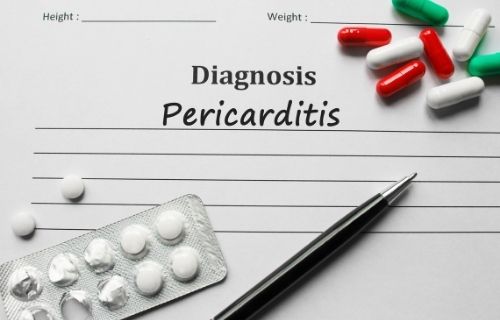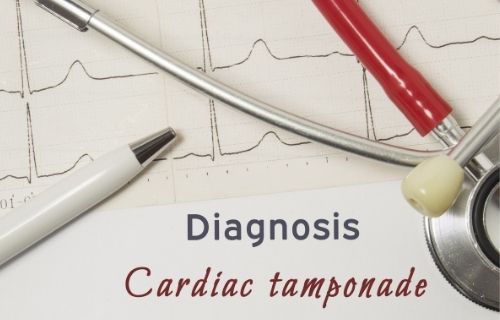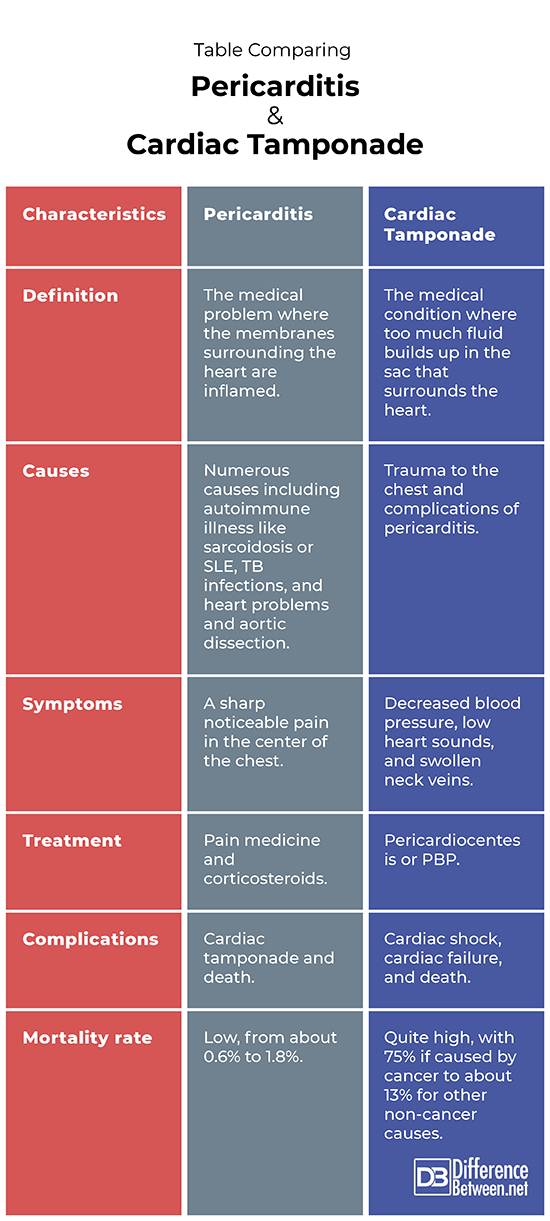Difference Between Pericarditis and Cardiac Tamponade
Pericarditis is a problem where the membranes known as the pericardium is inflamed. Cardiac tamponade is when there is a lot of fluid that has accumulated around the heart.

What is Pericarditis?
Definition:
Pericarditis is when there is inflammation of the sac enclosing the heart.
Causes and risk factors:
Pericarditis has many different causes. Sometimes it is a secondary development due to a person having cancer. It is frequently a result of problems like heart attacks or even aortic dissection. Autoimmune diseases including sarcoidosis and systemic lupus erythematosus (SLE) can result in pericardial inflammation. Having TB, or having had a prior heart problem are also risk factors for pericarditis.
Diagnosis:
Blood tests in which values for white blood cells and cardiac markers of CRP and troponin are examined can help with diagnosis. Imaging methods including CT scans and MRI of the chest area are also used for diagnosis of pericarditis. An ECG can indicate changes in heart function that could be due to pericardial inflammation.
Symptoms:
Symptoms of pericarditis are a sharp pain in the chest that may also be felt in the arms. The pain is worse if a person coughs or takes in a deep breath.
Complications:
Pericardial complications include a build up of too much liquid around the heart. This leads to cardiac tamponade that can cause death if untreated.
Treatment:
Pain medicine and certain corticosteroids may work in treating pericarditis.Often the problem can be managed outside of a hospital. In severe cases, hospital monitoring may become necessary, especially if complications become evident.

What is Cardiac Tamponade?
Definition:
Cardiac tamponade is the condition in which the sac that surrounds the heart becomes filled with excess fluid putting pressure on the heart and affecting its pumping ability.
Causes and risk factors:
One of the main causes of cardiac tamponade is traumatic injury to the chest area. Another reason a person may develop cardiac tamponade is if they have pericarditis that worsens.
Diagnosis:
An echocardiogram can be used to diagnose cardiac tamponade. The symptoms, when taken together, also can indicate a potential problem and lead a doctor to suspect that tamponade may be happening.
Symptoms:
Symptoms of cardiac tamponade include a low blood pressure and enlarged veins in the neck region. A doctor also often hears decreased heart sounds when listening to the heart with a stethoscope. All three of the symptoms we have mentioned here are known together as Beck’s triad.
Complications:
The complications of cardiac tamponade include swelling of the lungs, an inability of the heart muscle to function properly and pump enough blood around the body, heart failure, and death. Without treatment, cardiac tamponade will very likely, result in death.
Treatment:
Treatment of cardiac tamponade involves pericardiocentesis, where the fluid in the pericardium is removed by using a needle and catheter. Percutaneous balloon pericardiotomy (PBP) is another procedure in which fluid can be drained from the pericardium via a thin tube.
Difference between Pericarditis and Cardiac tamponade
Definition
Pericarditis is the medical problem where the membranes surrounding the heart are inflamed. Cardiac tamponade is the condition where an excessive amount of fluid builds up in the sac that surrounds the heart.
Causes
There are several causative factors involved in pericarditis including having an autoimmune problem like sarcoidosis or an infection like TB. The causes of cardiac tamponade are pericarditis or traumatic injury to the chest region.
Symptoms
The symptoms of pericarditis include sharp chest pain, especially when coughing or deep breathing. The symptoms of cardiac tamponade include low blood pressure, diminished heart sounds, and enlarged veins in the neck.
Treatment
Pericarditis is treated with pain medicine and corticosteroids. Cardiac tamponade is treated with pericardiocentesis or PBP.
Complications
Cardiac tamponade and death are complications of pericarditis. Cardiac shock, cardiac failure, and death are complications of cardiac tamponade.
Mortality rate
The chance of death from pericarditis is low with a mortality ranging from 0.6% to about 1.1%. The chance of death from cardiac tamponade is quite high, higher if it is due to cancer, with mortality at 75%. Mortality rate from other causes for cardiac tamponade is about 13%.
Table comparing Pericarditis and Cardiac tamponade

Summary of Pericarditis and Cardiac tamponade
- Pericarditis is an inflammatory problem of the membranes forming the sac of the heart.
- Cardiac tamponade is when there is too much fluid in the pericardial sac, causing problems for the heart.
- Both pericarditis and cardiac tamponade can potentially lead to death.
FAQ
How does pericarditis lead to cardiac tamponade?
Pericarditis is an inflammatory condition that causes an increase in blood flow to affected areas. This also causes an increase in fluid between the membranes of the pericardium, which in extreme cases, leads to cardiac tamponade.
What is the difference between pericarditis and pericardial effusion?
Pericardial effusion is defined as an accumulation of fluid around the heart while pericarditis is the inflammation of the pericardium. Pericardial effusion often occurs as a complication of pericarditis.
Is constrictive pericarditis the same as tamponade?
No, constrictive pericarditis relates to the sac of the heart, the pericardium becoming thicker than usual and scarring may be evident Tamponade is when fluid accumulates between the membranes of the pericardium causing the heart difficulty in pumping.
- Difference Between Rumination and Regurgitation - June 13, 2024
- Difference Between Pyelectasis and Hydronephrosis - June 4, 2024
- Difference Between Cellulitis and Erysipelas - June 1, 2024
Search DifferenceBetween.net :
Leave a Response
References :
[0]Hoit, Brian D. “Pericarditis”. Merck Manual, 2021, https://www.msdmanuals.com/professional/cardiovascular-disorders/myocarditis-and-pericarditis/pericarditis
[1]Spodick, David H. "Acute cardiac tamponade." New England Journal of Medicine 349.7 (2003): 684-690.
[2]Weiser, Thomas G. “Cardiac Tamponade ”. Merck Manual, 2021, https://www.msdmanuals.com/professional/injuries-poisoning/thoracic-trauma/cardiac-tamponade
